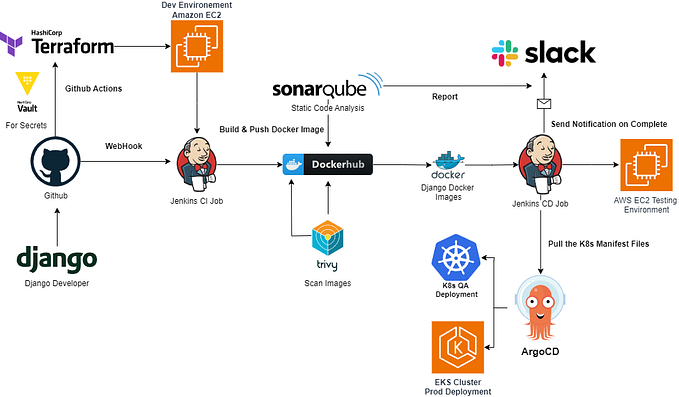Case Study: Industry Use Case of OpenShift

Containers are a solution to the problem of how to get software to run reliably when moved from one computing environment to another. This could be from a developer’s laptop to a test environment, from a staging environment into production, and perhaps from a physical machine in a data center to a virtual machine in a private or public cloud.
While containers can be thought of as a next-generation approach to virtualization, they share one downside with virtual machines. Given that containers can be deployed in far higher numbers than virtual machines, managing provisioning, deployment, tracking, and repairs of multiple containers across your IT architecture can be extremely challenging.
Container platforms help you deal with this challenge by enabling you to efficiently provision, test, deploy, scale, and run your containers across multiple hosts and operating environments, perform automatic health checks, and ensure high availability in expected workloads. Platforms like these, including Red Hat’s OpenShift, make container use viable for enterprise applications.
What is Openshift?
Red Hat® OpenShift® is an enterprise-ready Kubernetes container platform with full-stack automated operations to manage hybrid cloud, multicloud, and edge deployments.
OpenShift enables efficient container orchestration, allowing rapid container provisioning, deploying, scaling, and management. The tool enhances the DevOps process by streamlining and automating the container management process.
RedHat says “Over 2,000+ innovative companies choose Red Hat OpenShift to help bring their big ideas to life.”
Red Hat OpenShift benefits
Kubernetes has become the standard control plane for containers and containerized applications. But Kubernetes was built for the needs of IT Operations, not developers. In order for code to be deployed, developers need to be able to leverage the benefits of Kubernetes without requiring them to develop a platform skillset. OpenShift is designed so developers can deploy apps on Kubernetes without needing to learn Kubernetes.
With OpenShift, developer can truly automate once and run anywhere by developing on a Kubernetes platform instead of coding to the specifics of your existing infrastructures, whether they are on-premises, public cloud, or hybrid. Regardless of the infrastructure, the OpenShift interface remains the same. Get familiar with one application-centric UI that enables you to quickly build code, deploy containers, link services and more.
Case Study: NetApp

NetApp, a data management technology company, sought to improve the speed and efficiency of its IT service delivery. The company automated manual, repetitive management processes and streamlined storage provisioning using Red Hat Ansible Automation and Red Hat OpenShift Container Platform. As a result, NetApp has dramatically reduced delays and human errors — eliminating hundreds of hours of manual work — and accelerated application delivery times from weeks to minutes.
BENEFITS
- Achieved more efficient and accurate IT infrastructure maintenance
- Reduced application delivery time from weeks to minutes
- Gained support for evolution to modern, cloud-based application architecture
Challenges
NetApp faced significant challenges, such as the high level of time and effort required to manage infrastructure and delays in application delivery due to a lack of dynamic storage provisioning. Similar to other IT organizations, NetApp was also hindered by repetitive, manual processes. Manual provisioning of persistent storage also prevented NetApp from achieving its goal of delivering software using a containerand microservices-based approach.
To overcome these challenges, NetApp needed a dynamic provisioning solution to support its in-house storage technologies, as well as a fully supported and integrated container platform.
AUTOMATING INFRASTRUCTURE AND PROCESSES
To address its dynamic storage provisioning challenge, NetApp combined Trident, an open source project it hosts and leads, with Red Hat OpenShift Container Platform, a solution for advanced application creation and delivery automation across private, public, and hybrid infrastructures. Trident lets applications that are provisioned and managed using the Kubernetes container orchestration engine — included in OpenShift — use storage resources on demand.
REDUCED DELIVERY TIME FROM WEEKS TO MINUTES
Eliminating the bottleneck created by manual processes for persistent storage provisioning has helped NetApp dramatically accelerate application delivery. “With Red Hat OpenShift, we can very quickly spin up compute resources for containerized applications, and we can do the same for storage with NetApp Trident,” said Fox. “Using them together, we can deliver full-featured stacks in minutes or even seconds, instead of days or weeks.”
Conclusion:
Like NetApp, many other industries using OpenShift and solving their use cases in a very effective manner.
Thanks for reading :)









